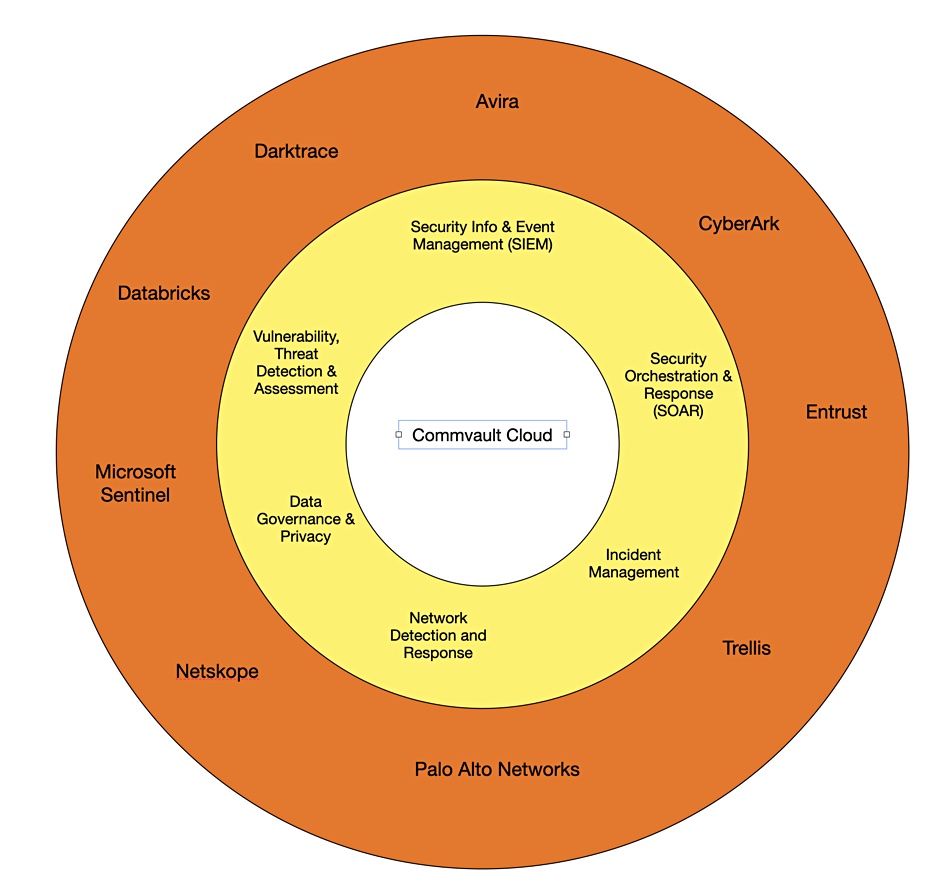Commvault, which just announced its all-in-one Commvault Cloud software infrastructure, has set up multiple security supplier agreements to provide comprehensive cyber resilience, security, and data intelligence capabilities.
Commvault believes collaboration is key, and is setting up partnerships with cyber security, artificial intelligence, and cloud suppliers to provide joint customers with more ways to detect, protect, and respond to potential threats and attacks, while also improving data visibility and governance. It is working with partners across the security tool chain, including: security information and event management (SIEM); security orchestration, automation, and response (SOAR); network detection and response; vulnerability, threat detection, and assessment; incident management; and data governance and privacy.
Chief product officer Rajiv Kottomtharayil said: “By integrating with a broad ecosystem of new security and AI partners via our Commvault Cloud platform, we … can collectively and jointly bring faster, smarter, and more connected security insights to organizations around the world.”

The partner list includes:
- Avira (part of Gen): AI/ML-driven threat intelligence, prediction, analysis and anti-malware technologies.
- CyberArk: Identity security platform.
- Darktrace: Machine learning-based anomaly detection with integration with HEAL and Commvault.
- Databricks: Data lake platform for data and AI.
- Entrust: Post-quantum cryptography and data encryption.
- Microsoft Sentinel: SIEM.
- Netskope: Zero trust-based Secure Access Service Edge (SASE) web content filtering.
- Palo Alto Networks: Threat intelligence repository leveraging Cortex XSOAR to shorten incident response times.
- Trellix: Threat detection and response with Intelligent Virtual Execution (IVX) sandbox to analyze and inspect malware in an isolated environment.
This set of integrations is impressive, but suggests the skill set needed to manage and operate these facilities will be substantial – and more so if more partners’ technologies are used. Admin staff will need to be trained and proficient with each of the suppliers’ technologies.
This suggests, in turn, given Commvault’s Arlie copilot initiative, that an even more capable copilot could be needed to help users understand the overall anti-malware capabilities of their IT environment, and the vulnerability gaps. Such an assistant would need to be trained on all the partners’ systems, be able to answer users’ questions, and generate reports and code for processes to help detect, diagnose, and fix problems in what is a highly complex environment.
If – like Commvault (Airlie), Databricks (Dolly) and Microsoft (OpenAI) – each supplier has their own copilot, they will need to interact with each other to help customers with multi-supplier security systems. Copilot-to-copilot conversations will be a whole new generative AI ball game.








